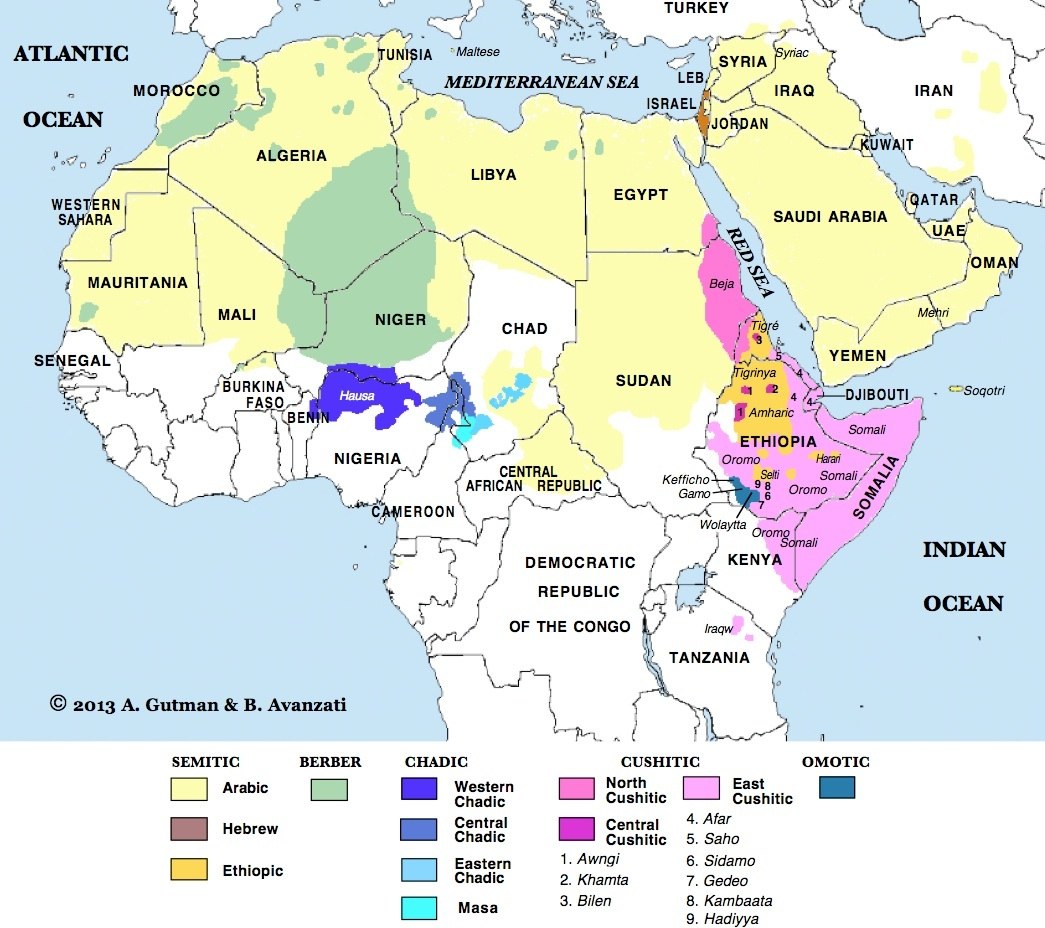User:Aquatiki/SEDES
This article is a collaborative project, so by all means, jump in! Your help is wanted and appreciated! |
| SEDES | |
|---|---|
| ሴዴስ | |
 | |
| Writing | w:Bakri Sapalo |
| Region: | w:Horn of Africa |
| Genders: | 2 |
| Cases: | 2 |
| Alignment | Nominative-Accusative |
| Proto-language: | w:Ethiopian language area |
| Typology: | Fusional |
| Word-Order | SOV |
| Languages: | w:Somali language,
w:Afar language, w:Tigrinya language w:Tigre language w:Amharic w:Oromo language w:Sidamo language |
| Population: | 117 million |
 | |
|
Africa: SEDES • Middle Semitic • Kintu • Guosa Central Asia: Jalpi • Caucas • Zens • Dravindian • Neo-Sanskrit Europe: Intralingua • Folksprak • Interslavic • Balkan • Samboka Far East: Dan'a'yo • IM • MSEAL | |
Anthropology
The biggest languages to mix are Omoro (24.9), Amharic (21.6), Somali (16.6), Tigrinya (6.8), Sidamo (2.9), Wolaytta (1.6), Gurage (1.5), Afar (1.2), Tigre (1.0)
Eritrea
Tigrinya, Tigre, Dahlik, Beja, Saho, Afar, Blin, Kunama, and Nara.
Ethiopia
There are 88 languages inside the Somalia Eritrea Ethiopia Sprachbund:
Aari Afar Alaba-K’abeena Amharic Anfillo Anuak Arbore Argobba Awngi Baiso Bambassi Basketo Bench Berta Borna Burji Bussa Chara Daasanach Dawro Dime Dirasha Dizin Dorze Gamo Ganza Gawwada Gayil Gedeo Geez Gofa Gumuz Hadiyya Hamer-Banna Harari Hozo Inor Kachama-Ganjule Kacipo-Balesi Kafa Kambaata Karo Kistane Komo Konso Koorete Kwama Kwegu Libido Majang Male Me’en Melo Mesmes Mesqan Mursi Nayi Nuer Nyangatom Ongota Opuuo Oromo Oyda Qimant Rer Bare Saho Sebat Bet Gurage Seze Shabo Shekkacho Sheko Sidamo Silt’e Somali Suri Tigrigna Tsamai Weyto Wolane Wolaytta Xamtanga Yemsa Zay Zaysete
Of these 88 language spoken in Ethiopia, 86 are living and 2 are extinct. 41 of the living languages are institutional, 14 are developing, 18 are vigorous, 8 are in danger of extinction, and 5 are near extinction.
Charles Ferguson first proposed the Ethiopian language area (1970, 1976). (Various scholars may also use the terms Sprachbund or linguistic area.) He posited a number of phonological and morpho-syntactic features that were found widely across Ethiopia (which included Eritrea at that time), including the Ethio-Semitic, Cushitic, and Omotic languages, but it did not include the Nilo-Saharan languages. Since then, others have pointed out smaller areas of shared features within this larger area (Appleyard 1989, Breeze 1988, Sasse 1986, Tosco 1994, Wedekind 1989).
One of the strongest features of the Ethiopian Language Area seems to be the use of the verb "say" as an inflected dummy element for an uninflected lexical base (Appleyard 2001, Cohen et al. 2002). Hayward has also pointed out patterns of lexicalization as evidence of a shared linguistic unity across the Language Area (1999, 2000), and Treis has found further examples (2010).
Baye Yiman has shown evidence of pragmatic similarities among languages of the Ethiopian Language Area (1997).
Güldemann has proposed that the use of a generic auxiliary is an area feature that includes Ethiopia but also other languages to the west and northwest.[2] Similarly, Cohen, Simeone-Senelle, and Vanhove have examined the grammaticalized use of "say" and "do" as an area feature in what they call "East Africa".
This topic is still not settled among Ethiopian linguists.
Phonology
- Nasals: m, n
- Plosive: b/p/p' ; d/t/t' ; g/k/k' ; ?
- Affricate: ǧ, č, č'
- Fric: f, s, z, h
- Approx: l, r, j, w (makes labio-velars)
gemination
no stress or tone
five vowels, all w/w/o length
Morphosyntax
definite article but no indefinite
Lexicography


